The most frequently asked questions on the forums tend to be those about just which fish to purchase. This is a deceptively simple question because there is so much that goes into it. It’s part about the fish, part about the environment that the fish will live in and then becomes an equation involving the other fish that will live in the tank, the desires of the aquarist, and of course, your pocket book. This article will attempt to address each of the considerations related to the fish itself and the environment it lives in, I’ll leave personal taste and the pocket book up to you. These items are things you should at least somewhat think about when choosing your fish. Though the list is fairly comprehensive (there might be some considerations I have forgotten to include) but some of the answers are quickly discovered online so in most cases this won’t actually take you very long per species to figure out and once you get very familiar with different species you can do it from memory. If you are a big planner, as some people are, you can even create species pages for a notebook on which you can write all this information out for comparison and future reference.
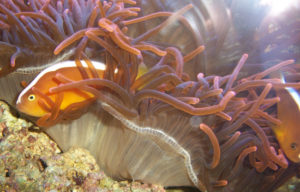
Current Health
One of the best places to start with purchasing a fish is to make sure it’s healthy and parasite free. But when we talk about health we aren’t just talking about not buying a fish because it’s already sick. We have to take stress and starvation into consideration as well. Fish are often transported thousands of miles before they arrive at your local fish store (LFS) for purchase. Some species (damsels) handle this better than other species (tangs) and will be in various stages of stress when you are considering buying them. They may also not have eaten for a considerable period of time. If a fish seems stressed or weak this doesn’t mean you can’t buy it, but you must understand that putting it in a tank with a bunch of other fish is likely to just exacerbate the problem and quickly lead to it getting fully sick and dying. Being put in a tank with lively fish that swim fast, pick on it, and out compete it for food hurts that fish’s chance of getting strong and living for many years.
If you do decide to purchase a fish that isn’t in the picture of health (something only experienced aquarists should consider) then it’s best to buy that particular fish first, or early on, when the tank has no or fewer fish in it. If possible you could also keep that fish in a quarantine tank until it gains strength. If the fish is actually sick or has parasites I recommend not buying it. Let the LFS take on the care of that fish. They will spend their money on medicines, extra foods, and quarantine for that fish. My personal opinion is if you find yourself in a shop where you feel you have to “rescue” a fish from that shop, then that’s not a shop you should frequent. Even the best shops will have sick fish, it’s an inevitable part of the transport but the best shops know how to treat them.
Fish Size
How big will it get? That’s one of the questions I always want to answer first. Right off the answer to that question can tell me if I’m going to buy that fish. Even if it’s totally compatible in all other ways with the fish I have if it’s going to grow too large for my tank then I’m simply not going to buy it. But there are other considerations relating to size than just the dimensions of your tank vs the dimensions of the fish. For example, some fish, like the box and cow fish, don’t have a very good turning radius when large. So while they might have enough room to swim in one direction, if the tank is too narrow their inflexible bodies will make it difficult for them to flip around again to go the other way. Some fish will eat other fish so if you have something like a lion fish in your tank then you need to be sure that tankmates aren’t on the menu by making sure they are large enough not to get eaten.
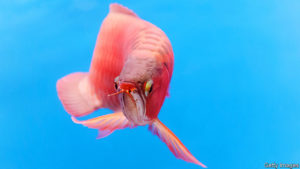
MYTH: Fish will only grow as big as their tank.
Just ask anyone who has purchased an oscar, or arowana, or blue tang or a pacu. Or even your typical goldfish. When you buy a fish, count on it getting to the full size and you won’t go wrong. It is true that some fish will be smaller in captivity than in the wild but I don’t recommend you build your system around thinking the fish will stay small because it just won’t.
You have three options really:
- Buy the right fish for the right tank.
- Be ready to give away a fish that gets too large.
- Be ready to buy an entirely new and larger tank for a fish that gets too large.
By far number one above is the easiest and most economical choice. Buying a new tank is expensive and takes up room in your home and giving away a fish you have cared for and nurtured to a large size is hard to do and such fish often fail when moved into a new environment. Do yourself and the fish a favor and plan ahead.
Temperament
Aggression is part of temperament, but only part of it. Timidity can be just as important. A fish that is boisterous, not not aggressive, will still stress out a timid fish as much as being picked on. This is something that often occurs with puffers. Puffer fish are actually rather timid fish. They are slow swimmers and rather prone to explore. It’s almost like they get lost in their own little world. They don’t do well with fish that swim quickly around them, darting here and there and distracting them. Even though those dither fish aren’t aggressive or picking on the puffer, their outgoing nature can prove to be a source of stress for the puffer. It’s also true that that most people find fish that are constantly on the move to be less relaxing than those that slowly glide around the tank. So if your purpose for the tank is relaxation, knowing the temperament of the fish you buy will help you achieve this. But if the purpose is excitement and entertainment, you might just like a more boisterous fish.
Aggression is, of course, a major part of temperament. You don’t want your fish to kill each other. Not only is this cruel to the fish but it’s a great big waste of your money. It’s important to do research and not just to any conclusions.
Territorial Requirements (I Can Only Keep 1 Male Clown Goby In My 210 Gallon Tank And That Fish Is Tiny).
One example I frequently site is the yellow clown goby. This is a tiny little fish but the males will fight until one of them is dead. Since there is no sexual dimorphism you don’t know if you are getting a pair or not. Even in my 210 gallon tank, a tank that was 6′ long I could only keep one male. It’s a tiny fish, so one would think that this was enough room for them to space out a territory for each of them, but because of their unique living quarters (SPS corals) they just would fight over the available corals.
Yellow tail blue damsels are another example. I had three males in the tank and they spaced themselves out with about a foot and a half between. One on the right end, one in the middle and one on the left end. As long as they stayed withing a specific territory, invisible to me but well known to each fish, they wouldn’t fight, but if one crossed the line, it got attacked. So territoriality is a huge factor in aggression but size isn’t always.
Some fish are not aggressive to fish of other species, but are to fish of their own kind. We use the term “conspecifics” to refer to this. It simply means “a member of the same species”. The watchman goby are good examples of this. They are generally not aggressive toward tankmates but don’t do well with others of their own species and sometimes fish that aren’t conspecifics but look like they are. For example jawfish have a similar shape to a goby so there might be some fighting there.
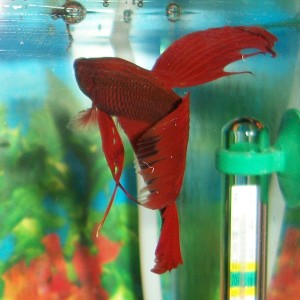
Food (Type, Quantity, and Frequency/Metabolism)
There are five main divisions of diets for fish that we will discuss briefly. These have ramifications on your wallet, the tank filtration, and overall fish health. How much food, how often to feed, and how fish metabolism plays into this. Most fish we keep in the aquarium will eat a broad range of foods. For example the yellow tang, a very popular fish, primarily eats algae, but it will also happily consume meaty foods as well. However, there are some fish that have very specific diets that you must cater to in order for them to be healthy.
Carnivores
Meat eaters. Or, more likely in this case pescivores, or fish eaters. These fish also eat squid, muscles, and just about any other aquatic based meat. There are some freshwater fish that can be fed terrestrial meat but for the most part these aren’t fish your average hobbyist will be keeping. Many flake foods are made from a variety of meats so often these will suffice for the health of your fish.
Herbivores
For marine fish this covers your algae eaters and for freshwater fish it’s a mix of algae eaters and actual true plant eaters. If you keep a planted tank you need to know which fish will eat which plants.
Insectivores
I’m not aware of any marine fish that fit into this category. Though some may opportunistically eat insects it’s not something that makes up the bulk of their diet. Some brackish fish, and some freshwater fish fit into this category. For the most part this is insect larvae. things like red, black and glass worms and in some cases meal worms too.
Planktivores
In my opinion this is the most difficult group to take care of. Their natural food is the tiny stuff that lives in the water. Daphnia for freshwater fish, copepods and the like for marine fish. Anthias are a marine reef fish that fits into this category. Generally speaking these fish need to be fed more often. For optimum health something like a brine shrimp hatchery in tank is beneficial with some more nutritious flake given once a day.
Omnivores
This is an easy group to deal with and it includes a large number of fish. Even fish like Tangs, which are generally consider algae eaters enjoy meaty foods too. I use Formula II flake food as the primary food source for my fish. I do this because it has a good mix of algae and meaty ingredients. Below are the ingredients which are on the back of the jar.
Condensed fish protein digest, salmon (wild), wheat gluten, wheat flour, fish meal, wheat starch, plankton, lecithin, fish oil, algae meal, vitamins [a-tocopheral acetate (source of vitamin E), L-ascorbic acid (source of vitamin C), calcium pantothenate, riboflavin (source of vitamin B2), pyridoxine hydrochloride (source of vitamin B6), niacin, menadione sodium bisulfite complex (source of vitamin K3 activity), rosemary extract (preservative), folic acid, thiamine mononitrate (source of vitamin B1), biotin, vitamin B12 supplement, vitamin A supplement, cholecalciferol (source of vitamin D3)], minerals [choline chloride, magnesium sulfate, iron, inositol, calcium carbonate, zinc sulfate, sodium selenite, manganese sulfate, calcium iodate, cobalt carbonate], marigold, salmon eggs, mussels, dried kelp, brine shrimp, garlic, spirulina.
I am not a huge fan of the addition of wheat, which is not very natural for fish. But I’ve not seen harm from it. I’ve been using this food for over 10 years now.
Here is the nutritional values of it:
Crude Protein (min.) — 50.3%
Crude Fat (min.) — 15.7%
Crude Fiber (max.) — 0.2%
Moisture (max.) — 8.0%
Ash (max.) — 4.5%
Phosphorus (min.) — 0.6%
I list this just as an example. There are many types of food. Some without the wheat and with a smaller ash content, which is desirable. In a reef tank the low phosphorus content is attractive to me because phosphates make reef keeping a challenge. Adding them in is inevitable (all food contains them) but using foods lower in them is helpful in my experience.
Quantity & Frequency of Food
Some fish are just pigs. They eat a lot of food. Food creates waste and waste means more work for you. It also costs you more money to keep a fish like that. Keeping fish like this with fish that are sensitive to water quality issues is also a bad idea. I like to cite puffer fish when I talk about eating. They are messy eaters. Much of the food they eat drops out the sides of their mouth. This is great for other fish looking to gather the leftovers if you have fish that want them. Find a fish that can live with a puffer and eats smaller bites of the same food, and you have a good match.
Above I mention anthias as a fish that needs to frequently eat. I’ve kept them and tried to feed just once a day like I do with most of my other fish. I found quickly that they were not at optimal health this way and switched to three times a day. I had to for the health of the fish. In my current tank I’m not planning on keeping anthias, though they are my favorite group of fish outside of puffers and goby, because it’s not a good fit.
Fish Compatibility
We’ve already discussed quite a bit and we’re just now getting to what is often the only thing on people’s list. This is most often expressed by the term “tankmates” and the question, “what fish can live with a [fill in the blank]?” Most people want a quick list of “yes” or “no” but it’s often not that easy. Keeping fish is a factor of all the things on this page. But sometimes we can give solid answers. For example, male betta with male fantail guppy is a resounding “NO”. This is the one area where research will be the most difficult. If you have to understand the natural behavioral tendencies of fish. With the betta and the guppy it’s a case of mistaken identity. Male betta fight other male betta on sight and the guppy just happens to look like one.
Sometimes it’s more subtle than that. Puffer fish are actually quite timid fish and stress easily around more boisterous tankmates. They do much better with fish that know how to keep their distance or that swim more slowly. Though the fish in question might not actually attack the puffer it’s behavior leads to stress and stress leads to illness.
Lion fish tend to eat any other fish that fits into their mouth. So keeping small fish with them is just providing them with an expensive meal.
Invert Compatibility
Inverts, short for invertebrates, is a general hobby term for snails, clams, shrimp, crabs, sea stars, corals, and more. Pretty much anything without a backbone. Though scientists might get a little more specific that suffices for our conversations. Many of these things are quite expensive and even the affordable ones are generally treasured. A cleaner shrimp, for example, isn’t all that costly, but it’s vibrant color and tame behavior (i.e. cleaning your hand) makes it a great addition to a tank. Fact is, some fish eat them. You need to know which fish. Some fish eat crabs, snails, clams, and even corals.
I’ve known aquarists that have spend hundreds of dollars (if not thousands) on corals only to introduce a fish that eats coral polyps. their entire stock of corals was destroyed before they realized it. Even a quick bit of research would have revealed that the little marine angelfish they purchased was a coral nipper. Some wrasse will go after shrimp, some fish eat the mantles of clams, and puffers, love snails. If you plan on keeping a fish only tank, then this isn’t something you have to worry about. But as you get deeper into the hobby it is likely you will want to include some inverts in your tank. They are incredibly rewarding to keep and a natural step for most people who stick with the hobby.
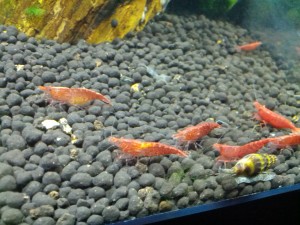
Substrate Requirements
Substrate is the general term for the stuff covering the bottom of your aquarium glass. Gravel is of course very common. It comes in garish and unnatural colors or in tame browns that emulate a natural environment. But not all fish can live with gravel so if that’s what you have in your tank, you need to know a bit about what fish don’t mind. One example is the freshwater eel group, tire tracks, peacocks, and fire eels are commonly sold and kept. My peacock eel lived in the sand and would keep its nose and eyes sticking out. Gravel often has sharp edges so a fish that hides in the substrate can get cut by the edges of the gravel. Another example is the very commonly kept corydora (cory) catfish. They have whisker like appendages known as barbels. These can get wedged between pieces of gravel and get sheered off. The fish needs these to feed and the wounds can become bacterially infected.
Sand makes an ideal substrate since it doesn’t pose a problem to fish. The only exception is that some sand alters the water parameters. For a cichlid tank this might be just what you are looking for, but for other fish not so much. Just know what you have, what it does to your tank, and what fish can deal with it.
Of course there are also substrates specially created for planting in. I have found that most fish deal well with these.
Swimming Requirements
Some fish dart all over a tank, some move slowly about. They all have requirements of size and shape. Commonly people will use gallons as a means to discuss their tank and if a certain fish should be kept in it. Questions like “how big of a tank does a yellow tang need?” get answered with replies like, “at least 75 gallons.” But that ignores shape. 75 gallon tanks aren’t all the same. Standard tanks are 48.5″ x 18.5″ x 21.2″ but they don’t have to be. Some are cubes. I use tangs as an example because they are likely the most argued over fish on the Internet. Some will say a yellow tang should be in no less than 125 gallons. They site the size of their ocean territories as a reason. But this ignores the fact that yellow tangs are grazing fish and cover a large area for the same reason a cow needs an entire field in the wild but a stall in the dairy yard. Of course we are keeping our fish out of love for nature, not commerce so we want something better for them than a stall. The point I’m making is that sometimes people let emotions and “what they’ve been told” to dictate their choice rather than good husbandry practices. I am more concerned with my fish having enough room to turn around, to sleep comfortably, and to get out of the way of an angry tankmate than I am giving them an ocean.
Some fish are just big fish. If that’s the case you need to accommodate that. A full grown cowfish for example has an inflexible body. It can’t bend so it has to have enough width in a tank size to turn around. Eels on the other hand can wind themselves into a knot so a 4 foot long eel can actually go in a smaller tank than a 6 inch long tang.
In freshwater fish like oscars, pacu, and arowana are known as “tank busters” meaning they will outgrow tanks fast.
I’ve seen responsible fish keepers get beat up on the Internet for keeping a baby regal tang in a biocube even though they clearly show they have a nice 210 gallon tank waiting for when it gets too big.
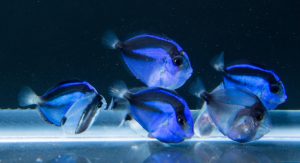
What’s wrong with having a tank that’s too small?
That’s an important question which is why I rhetorically ask it. Fish develop physical abnormalities when kept in tanks that are too small. They get curved backbones and hunchbacks. They becomes stressed and sick. They aren’t able to work their muscles as they need to. Too small of a tank can kill a fish.
Swimming Ability & Flow Requirements
Some fish can’t swim all that well under certain conditions. For example puffer fish don’t do well with heavy flow. If you have a tank with a lot of flow going through it consider getting fish that live in rivers. They are designed for it. The wild betta does alright in moderately fast water, but the show stopping betta splendins that you find with long flowing fins, or the fancy goldfish with similar finnage, can’t swim all that well in current. They wear themselves out and die, literally of stress and exhaustion.
Sensitivity To Changes In Parameters & Sensitivity To Water Quality Issues
Fish like the discus are very sensitive, or tangs in marine tanks. They need very good quality water. Smaller tanks, or tanks with lots of other fish, are likely to have too many changes in water parameters to deal with effectively. If you want to have a lot of fish, pick species that are hardy like damsels or barbs. The larger the tank, the more stable the water will be.
Sleeping Habits
Yes, fish sleep. Sometimes their sleeping habits are downright cute. My valentini puffer curls up on a rock looking every bit like a puppy dog. Betta like to sleep on the leaves of plants. You can even buy a betta hammock for your tank. Some fish sleep in sand like many wrasse and some fish hide in the rocks. A few, like the pajama cardinal float about the tank giving all appearances of being awake. If your tank doesn’t provide the fish with the right sleeping quarters, consider a different fish. Also be aware that some creatures will take advantage of sleeping fish (green serpent sea stars) to catch and eat them.
Rock Work or Plant Requirements
Fish need a place to hide, to feel safe and rocks or plants often provide that. They also help you map out territories for territorial fish. Open and showy rock designs might be in fashion but they don’t always give the fish what they need. As a side note, changing rocks or plants around can sometimes stop fish from fighting as they are able to map out new territories and end the dispute.
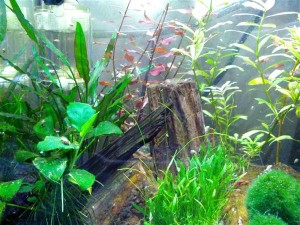
Lighting Preference
Some fish, like many species from the Amazon, or fish like squirrel fish in marine tanks, like subdued lighting. Keeping them in a brightly lit planted or reef tank will make them stress and remember stress leads to illness. This doesn’t mean you can’t keep those fish, just provide an area of shade for them. This can be done with rock overhands, or especially well with floating, broad leaved, or arching plants.
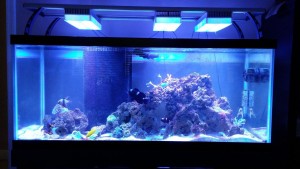
Body Shape (Deep Keeled Vs Shallow)
Fish come in a few basic body types. Some are shaped like torpedoes, some are like angelfish, very flat and tall. We call those flat and tall fish “deep keeled” after the keel on a boat. Fish that like, as well as fish like seahorses, require tanks of a certain depth to be comfortable in. Many fish don’t like being in shallow water anyway and if they are filling that space they feel vulnerable which gives them stress. If your tank is shallow or short, this is going to make a difference to the fish.
Escape And Jumping Potential
Fish like wrasse and eels commonly get out of tanks and onto the floor to their death. If you want to buy such fish just make sure the tank has a lid or screen they can’t escape from. Some lids increase the heat in a tank so if you have corals (which don’t like extra heat) you might want to use a screen or avoid fish that have escape potential.
Temperature Requirements
We commonly keep tropical fish so people often make the mistake of thinking all fish can live at the same water temperature. Some fish, like white cloud minnows or goldfish, do better at lower temperatures. Other fish, like pajama cardinals, do just fine at warmer. Research where the fish comes from and try to match that temperature. Generally tropical fish are kept in a range of 76-80 degrees. Temperate water fish is generally 60-75 degrees. Some fish live in cold water. To keep those you would require a chiller and a lot of effort. These fish aren’t common in the hobby but can be obtained. Examples are some of the dragonets and goby that live in the cold waters of the Pacific off the coast of parts of California.
Just because a fish “can” live at a higher temperature doesn’t mean it should and the other way around. Temperature has a strong effect on metabolism, digestion, and growth so keeping it as close to nature as you can will help keep your fish healthy.
Conclusion
While this probably seems like a lot of information, once you understand it the process goes rather quickly. Keeping a freshwater or marine fish
book of some sort on hand and reading it for pleasure (yes I do that) will get the list of species and their habits into your head so when the time comes you can go through all the above almost instantly in your mind. If you have a smartphone use it in the store to look things up. It’s not that store employees aren’t to be trusted, meaning they may very well know what they are talking about, but they may not. It’s up to you, not them, to pick the fish for your tank. With a smartphone there’s no reason not to at least verify what they are telling you. If you are embarrassed to “second guess” them in front of them, don’t worry about it, you don’t have to tell them that’s what you are doing. Just pretend to be texting a friend then secretly double check them. If they are wrong you don’t have to confront them if you don’t want, you can just not buy that fish.
You want your fish to live, partly because you care for them (your a good human being that way) and partly because you just spent money on them (it’s okay to admit you like money), knowing how to pick the right fish for the tank you have or the tank you want to create will give you the best change for success and that’s really what your’re after.
